Turn siloed data into loyal customers
Collect customer data from every source, unify it, then use it to power cross-channel marketing magic.
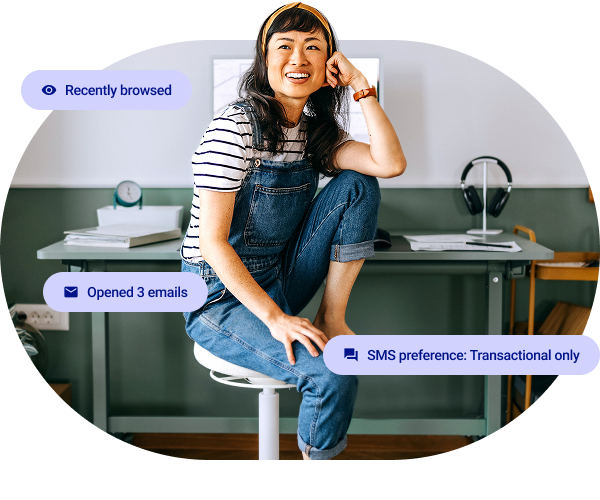
-
Unified real-time data
Collect and update behavioral, transactional, and preference data from every channel.
Smart segmentationGroup customers by behavior, value, or predicted intent to uncover insights and drive campaign ROI.
Cross-channel activationDeliver 1-1 style, data-driven personalization on email, web, SMS, in-app and on WhatsApp.
Secure & compliantStay compliant with built-in consent management, GDPR tools, and enterprise-grade security controls.
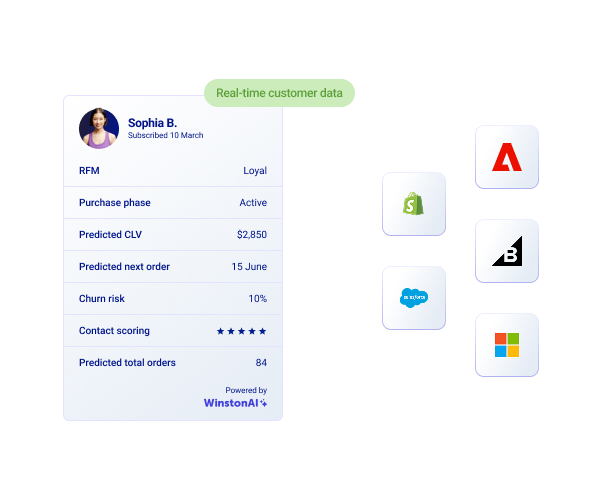
Collect and unify all of your customer data
Pull real-time customer data from multiple sources (orders, CRM, web behavior, reviews, anything…) into one platform. Visualize this in a rich, real-time profile for each contact and turn your ideal customer into a lookalike segment in one click.
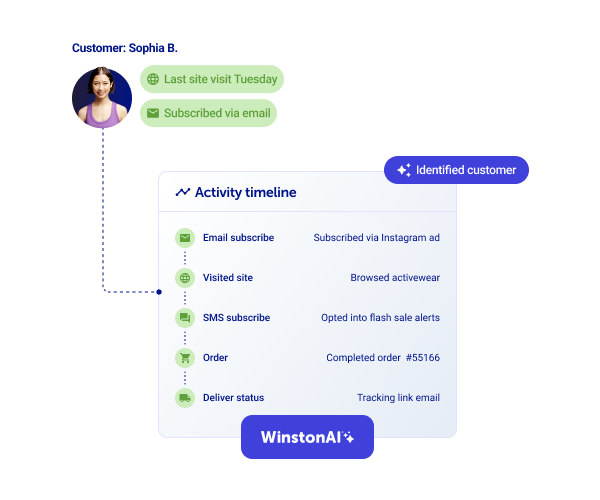
Identify customers across any device
Great personalization relies on accurately identifying users. Identify and engage customers across any device that they use, in line with the latest privacy legislation and changing cookie landscape.
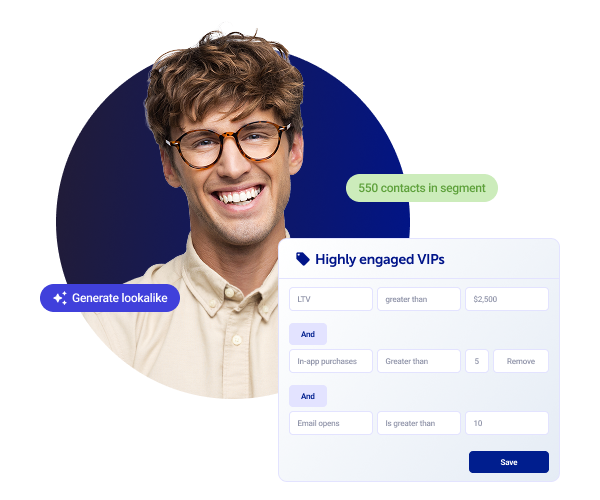
Unify data for confident decision-making
Drag-and-drop your way to powerful customer segments based on real-time behavior, purchase history, lifecycle stage, or any other data. Stuck for inspiration? AI suggestions, lookalike segments and actionable personas are a click away. Dynamic content blocks and smart program logic are just some of the ways you can personalize content by segment.
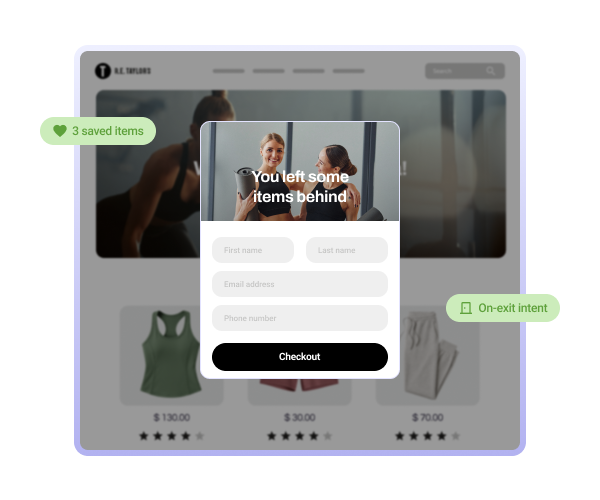
Grow your audience and gather preferences
Use targeted popovers, landing pages, forms and surveys to collect and enrich your customer data. Create a custom preference centre to discover how, when and what customers want to hear from you about - more happy customers and fewer unsubscribes.
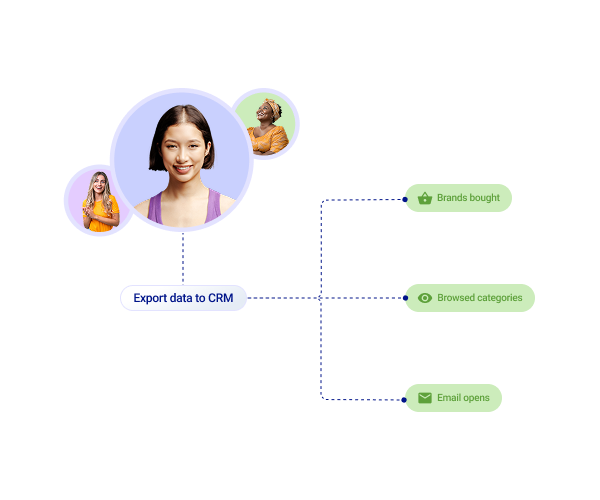
Import and export data in real-time
Spot trends and understand intent with two-way data sync. Automatically export data into your data warehouse for deeper analysis, or feed data into Dotdigital to fuel your personalized campaigns.
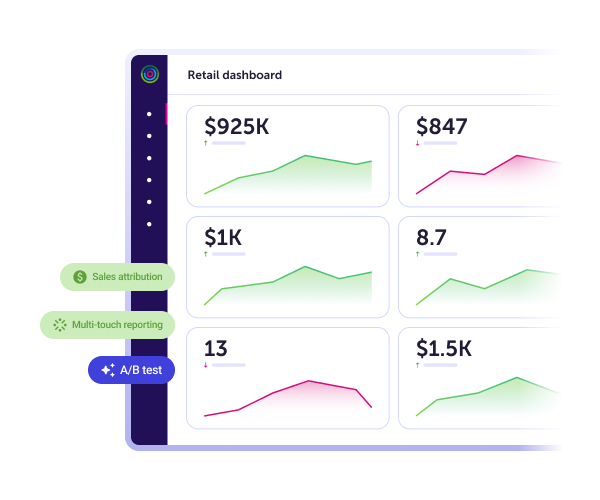
All the insights you need to make smart decisions
Understand the performance of every campaign and channel, attribute every conversion, and spot your next opportunities with our advanced reporting and analytics tools.
Personalize every channel with one platform
-

Delight web visitors with dynamic data-capture popups to acquire new sign-ups, personalized banners to welcome back customers and product recommendations to increase sales.

Drag-and-drop your way to record open rates with personalized email programs to welcome, nurture, remind, recommend and reengage your customers.

Make your app undeletable by creating 1-1 style experiences using cross-channel behavior and first-party data.

Retarget high-intent audiences on Meta, Google, X and TikTok and convert ad traffic with landing page personalization.

Keep customers updated with automated and dependable SMS marketing with built-in link tracking and shortening.

Use WhatsApp to create personal, two-way conversations with rich media, tailored product recommendations and real-time support.
Frequently asked questions
What types of customer data can I collect?
As a business, you can collect two key types of customer data: zero-party and first-party data.
Zero-party data is information that a customer intentionally and proactively shares with your business. This includes contact preferences, product interests and any additional personal context, typically gathered via:
- preference centers
- surveys and polls
- interactive forms or quizzes
First-party data, by contrast, is collected through customer behavior, such as:
- browsing activity on your website
- email, SMS and WhatsApp engagement
- social media interactions
- adding items to a cart or abandoning a cart
- coupons redeemed
- events attended
- in-app activity
Dotdigital’s marketing automation platform enables you to collect and unify both types of customer data in one dashboard.
Collect data with Dotdigital using:
Dotdigital enables you to turn insights into action, using customer data to trigger:
What’s the difference between zero and first-party data?
The main difference is in how the data is collected: zero-party data is information that customers willingly provide, whereas first-party data is gathered from their interactions with your brand. Both types are essential for creating personalized marketing strategies and improving customer experiences.
What is a single customer view (SCV)?
A single customer view (SCV) is a method of collating various types of customer data from different sources into a unified view or dashboard, so that marketers can easily understand what a customer really wants.
In Dotdigital, your SCV will collate customer data from across your tech stack, such as:
- recently viewed products
- products purchased
- average order value
- enrolled automation programs
With a single customer view, marketers can identify ideal customer personas or top spenders, as well as reveal trends and actionable insights. Dotdigital’s SCV also allows you to generate look-a-like segments based on a single profile to help scale revenue.
How does Dotdigital help manage customer data?
Dotdigital provides a variety of powerful tools and features designed to help you effectively gather and utilize customer data.
Seamless Integrations: Dotdigital offers smooth integrations with popular ecommerce platforms, CRM systems, and other marketing tools, ensuring that your data is always easily accessible.
Data collection: With customizable forms, surveys, and preference centers, Dotdigital allows you to gather detailed information directly from customers regarding their preferences, interests, and communication choices.
Single customer view (SCV): Access real-time, actionable customer data consolidated from multiple sources.
What is a customer data platform (CDP)?
A customer data platform (CDP) is software that collates different types of customer data, making it accessible in one unified customer database where marketers can gain a single customer view and build segments. The CDP serves as a cohesive, customer-centric solution that lays the groundwork for creating data-driven personalization.
A customer experience and data platform (CXDP) such as Dotdigital, enables marketers to benefit from all the features of a CDP whilst also being able to turn those insights into action, triggering personalized cross-channel journeys that drive revenue.
What is data privacy and why is it important?
Data privacy is all about keeping your personal information safe and making sure it’s used fairly. This includes personally identifiable information (PII) like your name, birthday, email address, and what you do online. With so much information being shared online these days, it’s more important than ever to protect it from being misused or falling into the wrong hands. Good data privacy helps build trust between you and the companies you interact with.
What is GDPR?
GDPR stands for General Data Protection Regulation. It’s a law in the European Union that started in May 2018. Its main goal is to give people in the EU more control over their personal data. It tells companies exactly how they can collect, use, and store your information. For example, companies need to ask for your permission before using your data, explain what they’ll do with it, and keep it safe. If they don’t follow the rules, they can get fined, no matter where in the world the company is based, as long as they deal with people in the EU.
What is the CCPA?
The California Consumer Privacy Act (CCPA) is a law in California that started in 2020 (and was updated in 2023). It gives people in California more rights over their personal data. For example, you can ask a company what data they have about you, tell them to delete it, or stop them from selling it. The law also says companies can’t treat you differently just because you use these rights. The idea is to make sure companies are open about how they use your information.
How can organizations collect customer data ethically?
Collecting data fairly means being open and respectful with your customers. Here’s how you can do it right:
- Ask first: Always get clear permission before collecting personal info.
- Be honest: Tell people what data you’re collecting, why you need it, and how you’ll use it.
- Only take what you need: Don’t collect more information than necessary.
- Keep it safe: Use strong security to protect people’s data.
- Let customers decide: Make it easy for people to see, change, or delete their data, and to say no thanks to certain uses.
- No sneaky tricks: Don’t use confusing language or tricks to get people to agree.
- Work with trustworthy partners: Choose technology tools and partners that care about privacy too.
What happens if a customer wants to update or delete their data?
Dotdigital makes it easy for customers to manage their own data. Through preference centers and self-service options, customers can update their information, change their communication preferences, or request deletion of their data. You can also manage these requests directly from your Dotdigital dashboard to stay compliant and responsive.
What are the best practices for data privacy & compliance for marketers?
To stay compliant with international data privacy regulations like GDPR (EU), CCPA (US), CAN-SPAM (US), PECR (UK), and others, follow these universal principles:
- Get clear, active consent before sending marketing messages, no pre-checked boxes or passive opt-ins
- Be transparent about what data you collect, why, and how it’s used
- Make your privacy policy easy to find and understand
- Always include a simple, immediate unsubscribe option in every message
- Only collect and use data needed for your stated purpose, and don’t repurpose data without new consent
- Respect people’s rights to access, correct, or delete their data quickly
- Keep your data clean by removing inactive or unsubscribed contacts regularly
- Protect customer data with strong security measures like encryption and access controls
- For GDPR, document consent clearly, specify your lawful basis for processing data, and avoid bundling consents for different uses
How does Dotdigital help marketers stay compliant?
Yes, Dotdigital is GDPR compliant. Here’s what we do:
- Easy-to-use tools: We help you collect consent, handle data requests, and keep data safe.
- Legal agreements: We offer contracts that meet GDPR standards.
- Strong security: We regularly check and update our security measures.
- Expert support: Our Data Protection Officer makes sure we stay compliant.
- Safe storage: If you’re in the EU, your data stays in EU data centers.
Visit our GDPR Help Center or Privacy Policy to learn more about how we protect your data and support your privacy rights.
How long does Dotdigital keep my data?
Your data stays in the platform until you delete it or close your account. After account closure, data is retained for 90 days before permanent deletion. You can also set contacts to expire 30 days after the last contact attempt, helping you manage data lifecycle efficiently.
